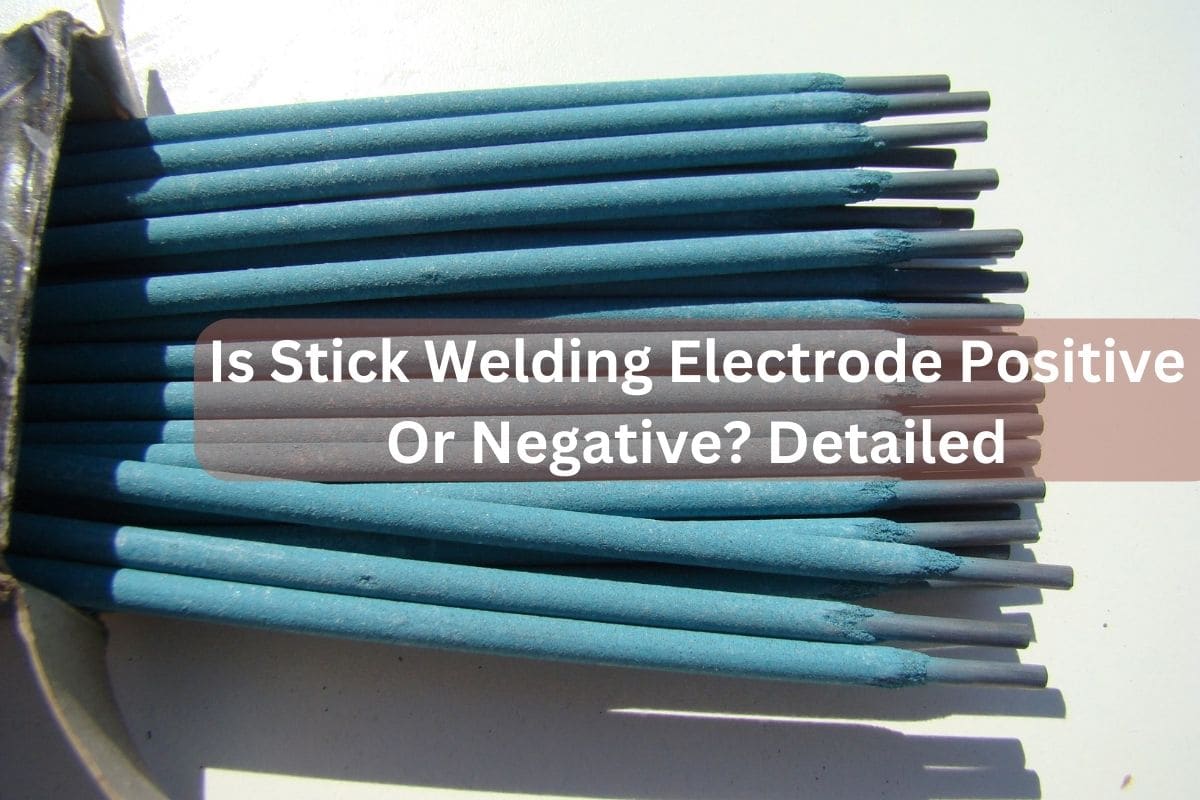Is Stick Welding Electrode Positive Or Negative? Diving into it, the electrodes predominantly used lean on the positive side, being crafted from materials such as cast iron, mild steel, and even special alloys.
The positive polarity has its perks; it ensures deeper penetration and superior arc formation. That’s the reason behind the widespread use of Direct Current Electrode Positive (DCEP).
This article delves deep, offering clarity to those keen on understanding the nuances of stick welding electrodes.
Understanding the Basics of Polarity in Stick Welding
When it comes to stick welding, polarity is the backbone of the entire process. There are three main types: DCEP, Direct Current Electrode Negative (DCEN), and Alternating Current (AC). Here’s a quick breakdown:
- DCEP: As earlier mentioned, this is the most favored due to its consistent polarity. Electrons in the welding circuit move from the negative electrode to the positive, resulting in an efficient welding process.
- DCEN: On the other end of the spectrum, DCEN is all about the negative. It’s less popular but still has its place.
- AC: This is the middle ground, alternating between DCEP and DCEN.
When it comes to welding, direct current (DC) generally steals the show over AC. It delivers superior results, but your choice will largely depend on the manufacturer’s advice and the nature of your job.
Read Also : Stick Welding Aluminum: Simple Reason Why is it Challenging
Why Is Polarity So Crucial?
The Direct Current Flow
Direct current maintains a one-way flow, making it a consistent player.
Positive polarity promises better blending of materials, whereas the negative counterpart results in a swifter melting, thanks to the bustling movement of negative electrons.
In DCEP or reverse polarity, there’s a smoother arc blending and electrode melting. With the electrode being positive, electrons dash from the workpiece to the electrode.
This not only provides filler metal but also ensures the weld is protected.
The Role of Electrodes in Stick Welding
This is where things get a tad intricate. The choice of electrode is non-negotiable in determining the success of your weld.
Each electrode type, such as E-6011 or E-7018, comes equipped with its unique coating, current system, penetration level, and purpose.
It’s not just about picking any electrode; it’s about selecting the right one for the task at hand.
Key Considerations When Venturing Into Stick Welding
Know Your Welding Machine
Before going all in, it’s paramount to familiarize yourself with your welding machine.
Newbies often underestimate the significance of discerning the type of metal in use and the size of the electrodes.
Different welding tasks call for distinct metals. A mismatch in polarity can be disastrous, producing less than stellar results.
Read Also : Stick Welding Stainless Steel: All Complete You Need to Know
A Closer Look at Stick Welding Electrodes
Having the right electrode can make or break your welding project. Remember, each electrode type comes with its unique characteristics.
Knowing the difference and when to use which is crucial. For instance, while an E-6011 might be perfect for a particular task, an E-7028 could be the better choice for another.
Quick Tips and Insights
- Polarity in stick welding primarily oscillates between AC and DC.
- The coated welding electrode typically leans towards reverse polarity. Hence, the frequent use of the positive electrode by welders globally.
- Always refer to the manufacturer’s guidelines and ensure you understand the job’s specifics before deciding on polarity.
So, Is Stick Welding Electrode Positive Or Negative?
In the vast world of welding, understanding whether a Stick Welding Electrode is Positive Or Negative can greatly influence your project’s outcome.
While DCEP reigns supreme, the significance of DCEN and AC can’t be understated. Remember to always consider the type of metal, the welding job, and the electrode type before diving in.
Knowledge is power, and in welding, it’s the difference between a strong, durable weld and a weak one.
Do you have any personal experiences or additional insights on the topic? Share them below; we’d love to hear from you!


